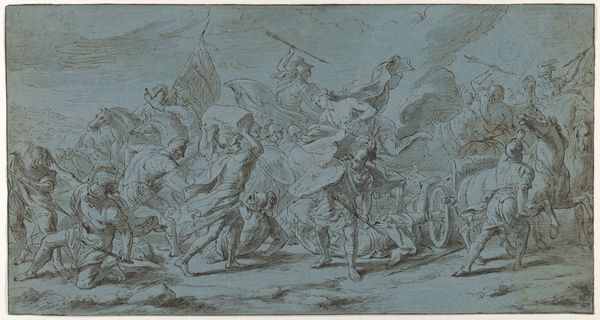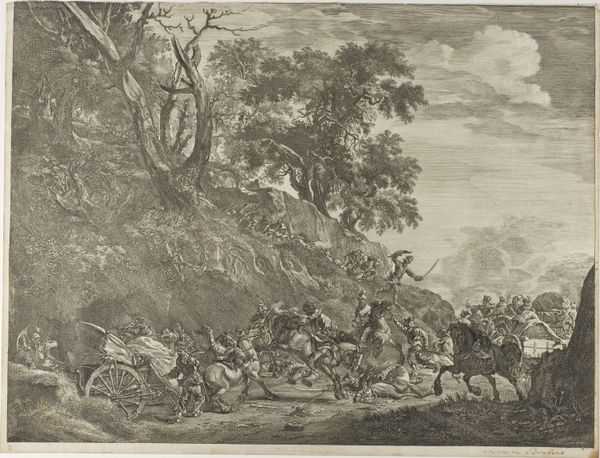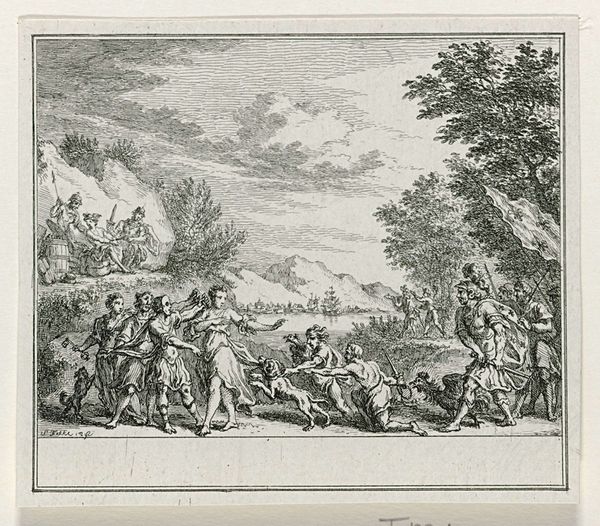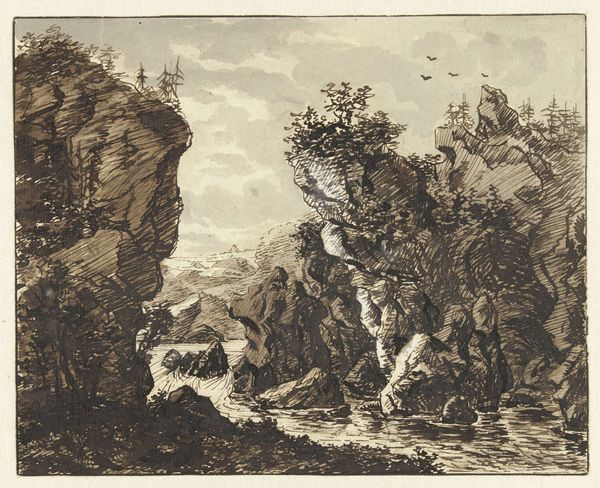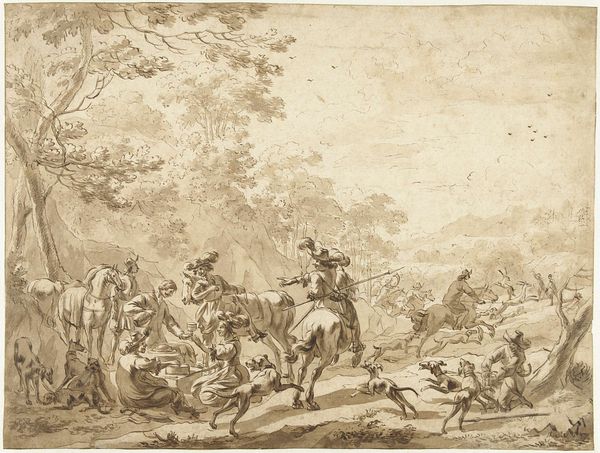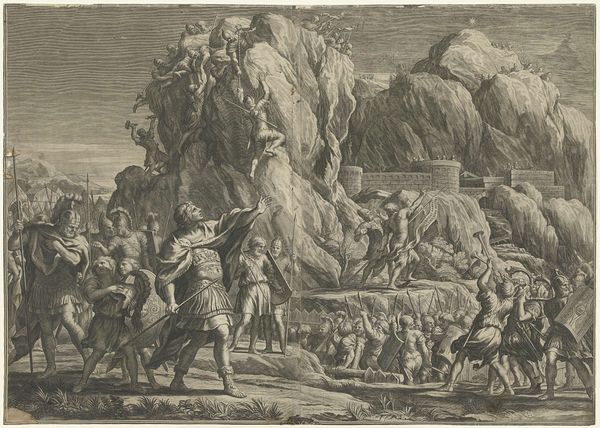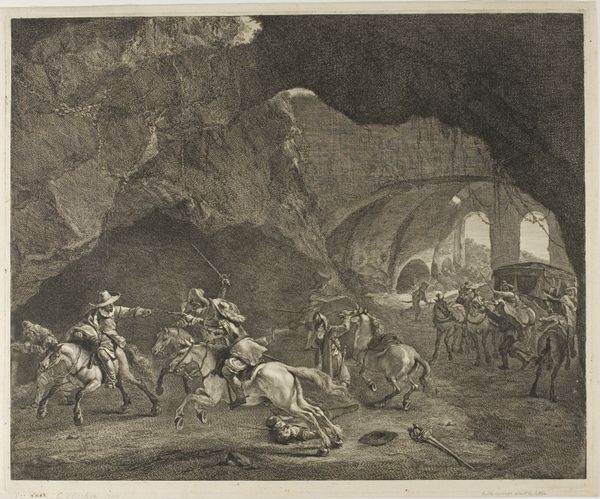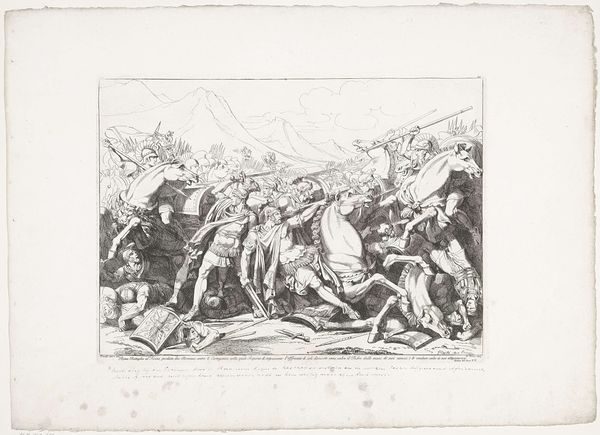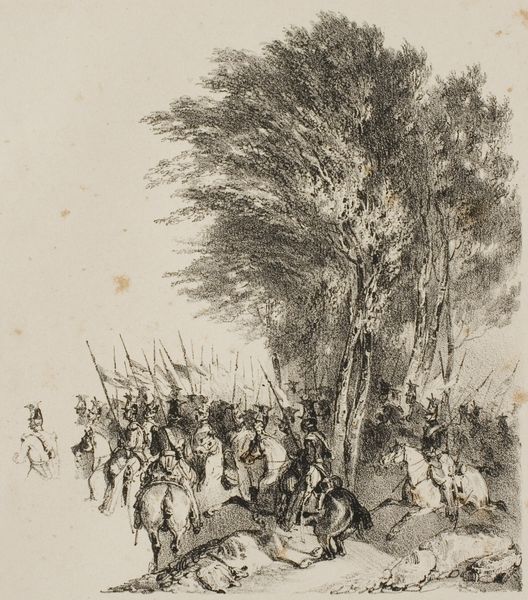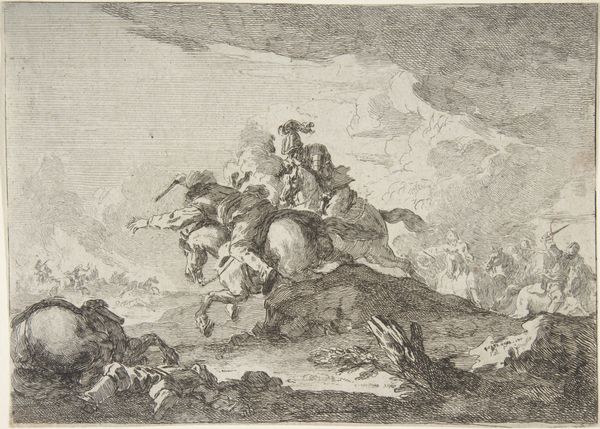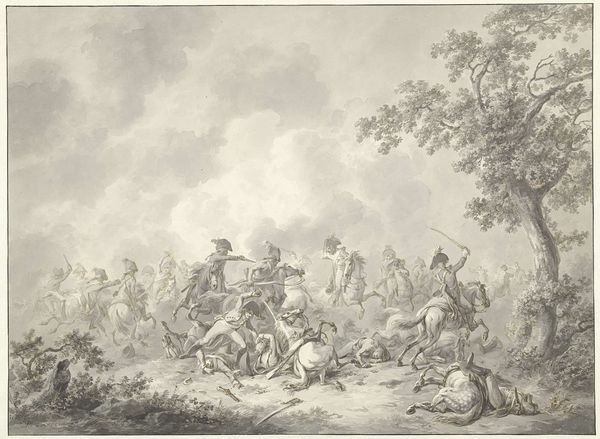
drawing, print, etching, paper, ink, chalk
#
drawing
#
narrative-art
#
baroque
#
ink painting
# print
#
etching
#
etching
#
paper
#
ink
#
chalk
#
genre-painting
#
history-painting
Dimensions: 171 × 255 mm
Copyright: Public Domain
Curator: Let’s turn our attention to "Siege of Jericho", an etching by Giovanni Francesco Grimaldi, currently residing here at the Art Institute of Chicago. What strikes you immediately about this print? Editor: It’s busy, chaotic, but with an underlying current of determined purpose, wouldn't you agree? The multitude of figures scaling that imposing rocky facade really emphasizes human endeavor. Curator: Precisely. And it's an etching – the lines are made through the corrosive action of acid, manipulating the materials of copper, ink and paper to create this scene. Think of the labor involved in producing and distributing these images; etching allowed for mass production and broader consumption of historical narratives like this one. Editor: The scene itself portrays that famous Old Testament moment, doesn't it? The Israelites, commanded by Joshua, besieging Jericho, with trumpets blaring to bring down its walls. Curator: Yes. The symbolism is incredibly powerful here. The horns become instruments of divine intervention, tools reshaping civilization, and consider those figures scaling the walls, representing persistence, the embodiment of religious faith put into material practice. Editor: But what’s really fascinating is Grimaldi’s choice to depict both armies performing almost identical acts of physical exertion. Those inside are just as frantically throwing rocks from the top of the city as those attacking are scaling up it, thus hinting that their human material strength alone will decide who prevails, and that maybe what it means to be victorious is merely to have out-labored your rival. Curator: That's a great observation. The composition directs our eyes toward this very struggle, central to the narrative of the print. This wasn't simply an artistic rendering of a story; this print itself entered the theater of cultural exchange as another object to be possessed, circulated and reproduced through complex processes, almost replicating, in a material form, what it shows happening inside the picture. Editor: Indeed, it is such details that give such imagery its enduring, resonant meaning over time. I notice something new each time I encounter it. Curator: Absolutely. Studying this work through the lens of its materiality offers another valuable layer of appreciation. Editor: I wholeheartedly agree, focusing on the rich visual language reveals a whole new side to a story we think we know so well.
Comments
No comments
Be the first to comment and join the conversation on the ultimate creative platform.

